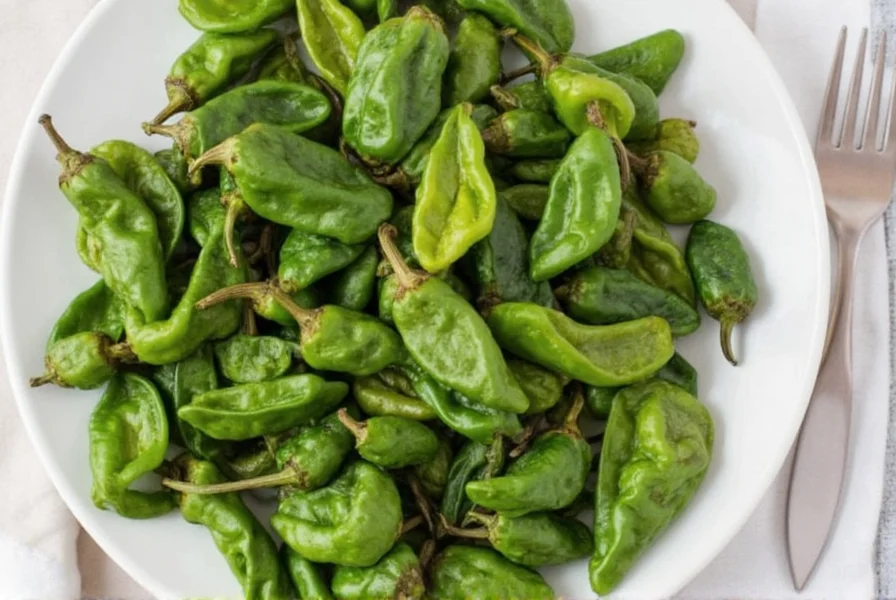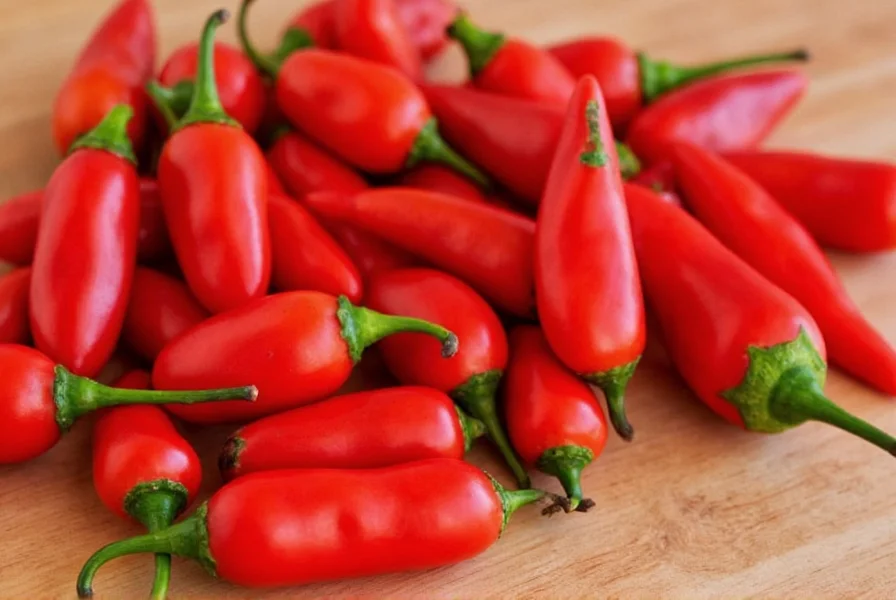Pequin Peppers: Tiny Fireworks in Your Spice Cabinet
If you're a spice lover or culinary adventurer, let’s talk about the chili pequin pepper—a small but mighty firecracker that's ready to ignite your kitchen. Whether you're looking to add some serious heat to your salsa or bring depth to slow-cooked dishes, these little red jewels are worth knowing.
Table of Contents
- What Are Pequin Peppers?
- Spice Level: How Hot Are They?
- Flavor Profile and Culinary Uses
- Why You’ll Fall for These Mini Powerhouses
- Cooking Tips: Making the Most of Pequin Heat
- Buying Guide: Where to Find and What to Buy
- Growing Pequin Peppers at Home
- How to Store and Preserve Them
- Final Thoughts: Small Pepper, Big Impact
What Are Pequin Peppers?
The chili pequin pepper (also known as bird pepper or chile pequín) is a wild chili native to parts of the United States and Mexico. It’s often found growing in the wild, particularly in Texas and northern Mexico. These tiny peppers measure less than an inch long, usually roundish with a slight point at the end, and pack a surprising punch of flavor and heat.
Botanically, they belong to the *Capsicum annuum* species and are believed to be one of the oldest known domesticated chili varieties. Because of their small size and high concentration of capsaicin, they are often used dried or ground into spice blends.
Spice Level: How Hot Are They?
If you love heat but aren’t quite ready for ghost peppers or Carolina reapers, pequin peppers might just be your perfect middle ground. On the Scoville scale—a measurement of spiciness—they range between **30,000 to 60,000 SHU (Scoville Heat Units)**.
| Pepper Variety | Scoville Range (SHU) | Pequin Comparison |
|---|---|---|
| Jalapeño | 2,500–8,000 | ~4x hotter |
| Serrano | 10,000–23,000 | ~2x hotter |
| Habanero | 100,000–350,000 | Much milder |
| Pequin | 30,000–60,000 | Just right! |
This makes them significantly hotter than common table jalapeños, yet not so fiery that they overwhelm the palate. Their heat builds gradually, lingering on the tongue with a clean, peppery finish.
Flavor Profile and Culinary Uses
While many spicy peppers are all about the burn, pequin peppers offer more than just heat—they deliver a complex flavor profile that includes:
- Citrusy brightness
- Smoky undertones
- Faint sweetness when ripe
In traditional Mexican cuisine, especially in salsas and moles, pequin peppers are prized for their ability to elevate the dish without overpowering it. They’re commonly toasted and ground into powders or infused into oils and vinegars. Some chefs even use them whole in stews and soups, where their subtle flavor infuses the broth beautifully.
Why You’ll Fall for These Mini Powerhouses
Here’s the thing: pequin peppers may be small, but they punch above their weight in several ways. Here are five compelling reasons to fall head-over-heels for this underrated chili:
- Natural Wild Flavor: Grown in the wild or minimally farmed, these peppers have a rustic edge that artificial spices can't replicate.
- Heat That Builds: The spiciness doesn’t hit you all at once—it creeps up gently and lingers.
- Great for Infusions: Their concentrated oils make them ideal for homemade chili oils, vinegars, or spirits.
- Packed with Capsaicin: Known for its metabolism-boosting properties and pain-relief benefits, capsaicin content is high in pequin peppers.
- Versatile Use: From dry rubs to hot sauces to gourmet garnishes, pequin peppers fit almost any application.
Cooking Tips: Making the Most of Pequin Heat
Ready to put pequin peppers to work? Here are a few tips from seasoned cooks and home chefs who swear by these fiery fruits:
- Toasting Brings Out Depth: Lightly toast dried pequins in a dry pan before grinding or blending to unlock richer, smokier notes.
- Use Whole or Crushed: For a rustic texture, crush dried peppers with a mortar and pestle and sprinkle over tacos, grilled meats, or roasted veggies.
- Infuse Oils and Vinegars: Place whole dried pequin peppers in oil or vinegar for a few weeks to create intensely flavored condiments.
- Add Last-Minute Heat: If using fresh, chop finely and toss into dishes at the end of cooking to preserve freshness and aroma.
Buying Guide: Where to Find and What to Buy
Whether you want fresh, dried, or powdered pequin peppers, here’s what to look for and where to find the best quality products:
Where to Buy
- Mexican Grocery Stores: Fresh and dried versions are often available during peak season.
- Online Spice Retailers: Brands like La Flor, Rodelle, and Penzeys carry premium-quality dried pequin peppers and powders.
- Farmers Markets: Especially in Southwest U.S., check local stands for fresh, seasonal picks.
What to Look For
| Type | Features | Best For |
|---|---|---|
| Fresh Pequin Peppers | Bright red color, firm texture, no soft spots | Chopping raw into salsas or pickling |
| Dried Pequin Peppers | Deep red or brown hue, slightly brittle, aromatic | Grinding into powder, infusing oil, or using in soups |
| Ground Pequin Powder | Bold red color, strong aroma, no clumps | Dry rubs, seasoning blends, quick heat boost |
Growing Pequin Peppers at Home
If you’ve got a green thumb—or are just curious—growing your own pequin peppers can be both rewarding and practical. Here’s how to get started:
- Climate Zone: Best suited for USDA zones 8–11; tolerate drought well but prefer full sun.
- Soil Needs: Well-draining soil rich in organic matter.
- Watering: Moderate watering—let soil dry out between sessions.
- Harvest Time: Peppers turn from green to bright red when fully mature; harvest by hand or allow to drop naturally.
You can grow them in pots indoors during winter and move them outside when the weather warms up. Just remember to wear gloves when handling fresh ones—they’ll leave a burn if you touch your eyes or face!
How to Store and Preserve Them
Want to enjoy your pequin stash for months after harvest? Proper storage ensures they stay flavorful and usable:
- Fresh Peppers: Keep in a paper bag in the fridge for up to two weeks.
- Drying: Hang in bunches in a dry, well-ventilated area or use a dehydrator until crisp.
- Freezing: Freeze whole or chopped in a sealed container—no blanching needed.
- Oil & Vinegar Infusions: Store in dark bottles away from sunlight for up to six months.

Final Thoughts: Small Pepper, Big Impact
Pequin peppers are more than just another hot chili—they’re a culinary gem with history, versatility, and bold personality. Whether you're a pro chef or a weekend griller, adding them to your pantry will give your dishes that extra layer of flavor and fire.
From salsas to stews, oils to snacks, the possibilities are endless. So why not take the leap and try a bottle or a jar of pequin peppers today? Once you taste their magic, you’ll wonder how you ever cooked without them.











 浙公网安备
33010002000092号
浙公网安备
33010002000092号 浙B2-20120091-4
浙B2-20120091-4